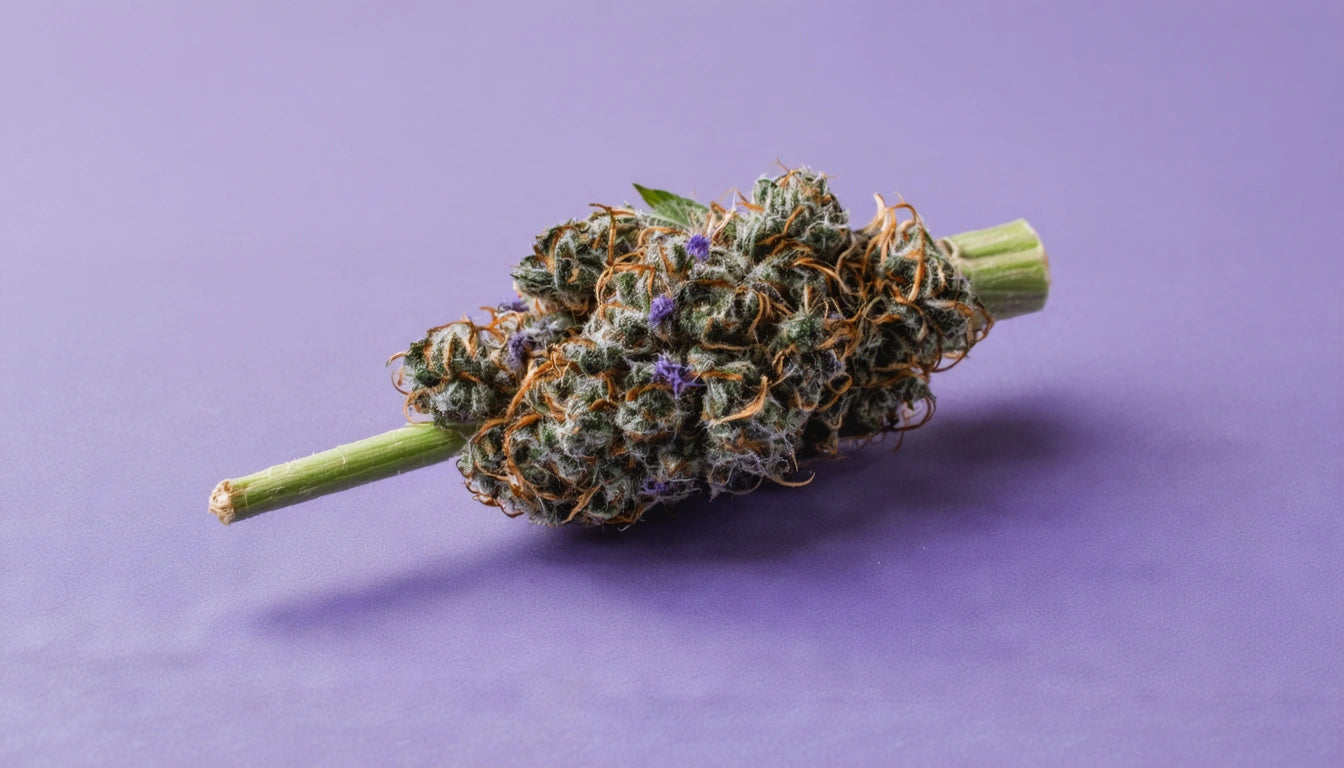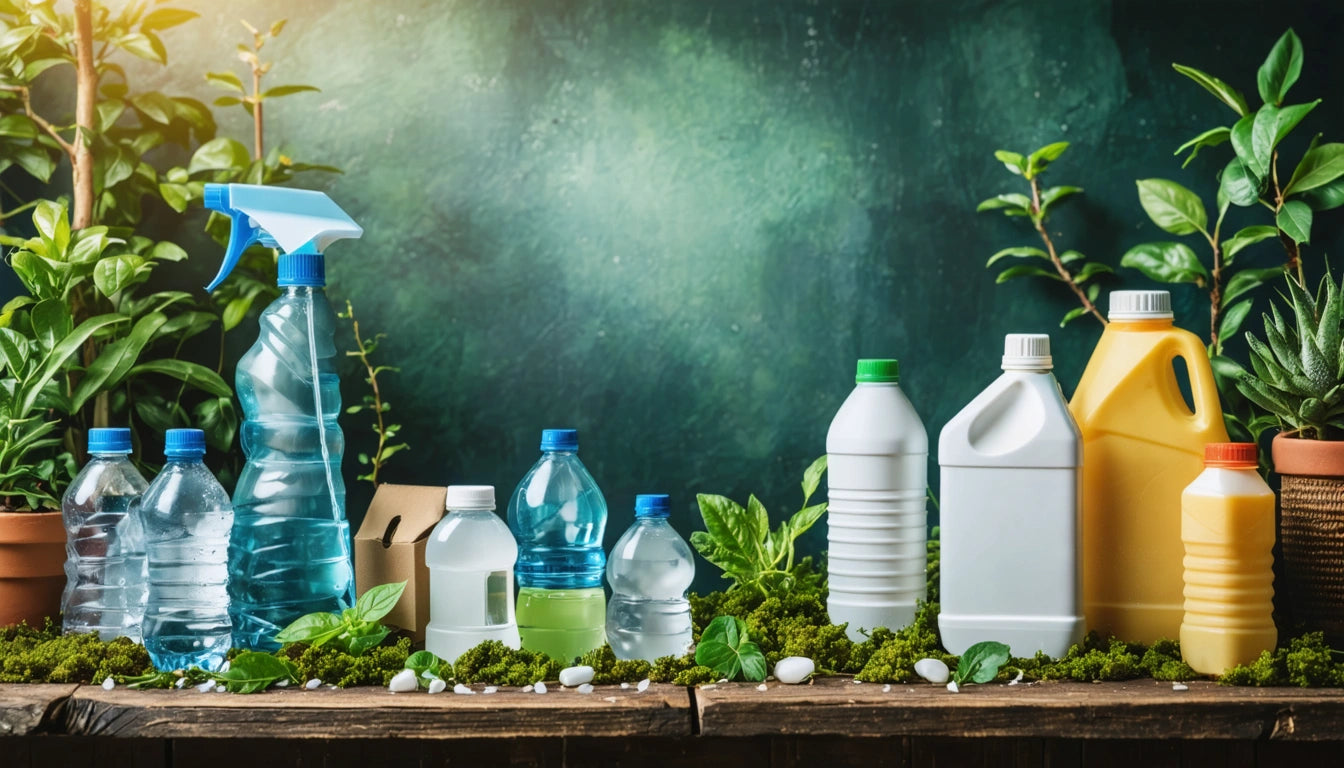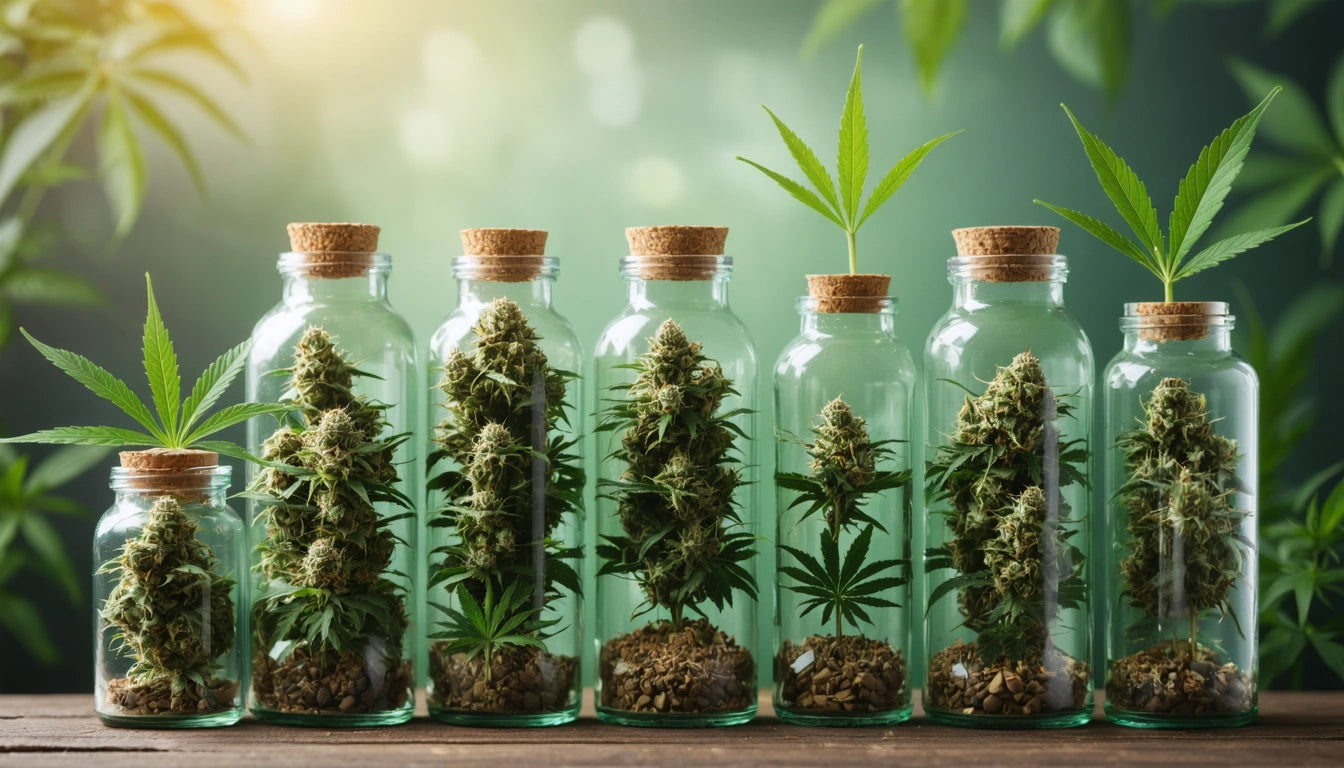Table of Contents
Why Does Weed Turn Purple? Understanding the Causes and Effects
The striking purple hues that sometimes appear in cannabis have fascinated cultivators and consumers alike. This distinctive coloration raises many questions: what makes weed turn purple, is purple cannabis more potent, and why does some cannabis "bleed" purple when exposed to water? Understanding these purple phenomena requires exploring both the science and the myths surrounding colorful cannabis.
The Science Behind Purple Cannabis
The purple coloration in cannabis comes primarily from compounds called anthocyanins. These water-soluble flavonoids are present in many plants, including blueberries, eggplants, and certain cannabis varieties. Anthocyanins produce colors ranging from red to blue to purple, depending on the pH level of the plant.
According to cannabis strain experts, anthocyanins serve as a natural sunscreen for plants, protecting them from UV damage, extreme temperatures, and certain pests. In cannabis, these compounds become more visible when chlorophyll (which gives plants their green color) breaks down, typically during the later flowering stages.
Genetic Factors: Nature's Purple Programming
The primary reason some cannabis turns purple while others remain green is genetics. Certain strains have been specifically bred to express purple traits more prominently. These genetics determine whether a plant has the capacity to produce sufficient anthocyanins to display purple coloration.
Purple cannabis varieties often have genetic lineages tracing back to regions with cooler climates, where purple pigmentation may have offered evolutionary advantages. Today's purple strains are typically the result of careful selective breeding to enhance these natural color expressions.
Can Any Cannabis Plant Turn Purple?
While environmental factors can influence coloration, not all cannabis plants have the genetic potential to turn purple. Without the right genetic predisposition, no amount of environmental manipulation will produce vibrant purple buds. This explains why some growers might attempt various techniques to induce purple coloration but see no results.
Environmental Influences on Cannabis Coloration
For plants with the genetic potential for purple coloration, several environmental factors can trigger or enhance this trait:
- Temperature: Cooler nighttime temperatures (below 50 °F/10 °C) during flowering can accelerate chlorophyll breakdown and anthocyanin expression
- Light exposure: Certain light spectrums can influence anthocyanin production
- pH levels: The soil's pH affects the specific shade of purple that appears
- Nutrient availability: Phosphorus deficiencies can sometimes induce purple stems, though this is different from desirable purple bud coloration
Experienced growers can manipulate these factors to enhance purple coloration in genetically predisposed plants. However, as noted in guides on cannabis plant issues, extreme temperature manipulation solely for color can stress plants and potentially reduce potency or yield.
Popular Purple Cannabis Strains
Several cannabis strains are renowned for their consistent purple expressions:
- Granddaddy Purple: A classic indica with deep purple buds and grape-like aroma
- Purple Punch: Known for its bright purple highlights and dessert-like flavor profile
- Purple Haze: A sativa-dominant strain with subtle purple hues and energetic effects
- Purple Urkle: An indica strain with dark purple coloration and berry notes
These strains have been selectively bred to maximize their purple potential while maintaining desirable effects and potency profiles. For consumers interested in experiencing purple cannabis, these varieties offer reliable purple expressions when properly cultivated.
Purple Weed Myths and Misconceptions
Several misconceptions about purple cannabis persist in consumer circles:
Myth 1: Purple Weed is Always More Potent
There is no direct correlation between purple coloration and THC content. A strain's potency depends on its genetic makeup and growing conditions, not its color. Some purple strains are indeed potent, but this is coincidental rather than causative.
Myth 2: All Purple Cannabis is Indica
While many purple strains have indica genetics, cannabis type classifications show that sativa and hybrid strains can also display purple coloration. The color doesn't determine the effects profile.
Myth 3: Purple Coloration Indicates Better Quality
Purple buds may have visual appeal, but color alone doesn't determine quality. Factors like trichome development, aroma, cure quality, and cannabinoid profile are more relevant quality indicators.
Why Cannabis May "Bleed" Purple in Water
The phenomenon of weed bleeding purple in water is directly related to anthocyanins being water-soluble. When purple cannabis comes into contact with water, these compounds can leach out, creating a purple tint in the water. This is similar to how beets or red cabbage can color cooking water.
This effect is more common in freshly harvested cannabis that hasn't been properly dried and cured. Well-cured cannabis typically has less moisture and more stable anthocyanins, reducing the bleeding effect. For those storing their products, high-quality storage bags designed for eighth portions can help preserve both color stability and overall freshness by controlling moisture exposure.
It's important to note that this bleeding doesn't indicate any problem with the cannabis. It's simply a natural property of the anthocyanin compounds interacting with water.
Benefits and Considerations of Purple Cannabis
While the purple coloration itself doesn't directly enhance effects, anthocyanins do have potential health properties. These compounds are known antioxidants and may offer anti-inflammatory benefits. However, research specific to anthocyanins in cannabis consumption is still limited.
For consumers, the choice between purple and green cannabis should ultimately come down to the strain's overall profile rather than its color. Factors like cannabinoid content, terpene profile, and growing methods have far more impact on effects and quality than color alone.
For cultivators and brands, purple strains can offer marketing advantages due to their visual distinctiveness. As guides on cannabis identification indicate, visual characteristics like color can become part of a brand's signature, helping products stand out in competitive markets.
Whether you're growing, selling, or consuming cannabis, understanding that purple coloration is primarily an aesthetic quality rather than a functional one helps set appropriate expectations. Purple cannabis can be excellent, but so can green cannabis, with quality determined by factors far beyond this eye-catching hue.











Leave a comment
All comments are moderated before being published.
This site is protected by hCaptcha and the hCaptcha Privacy Policy and Terms of Service apply.